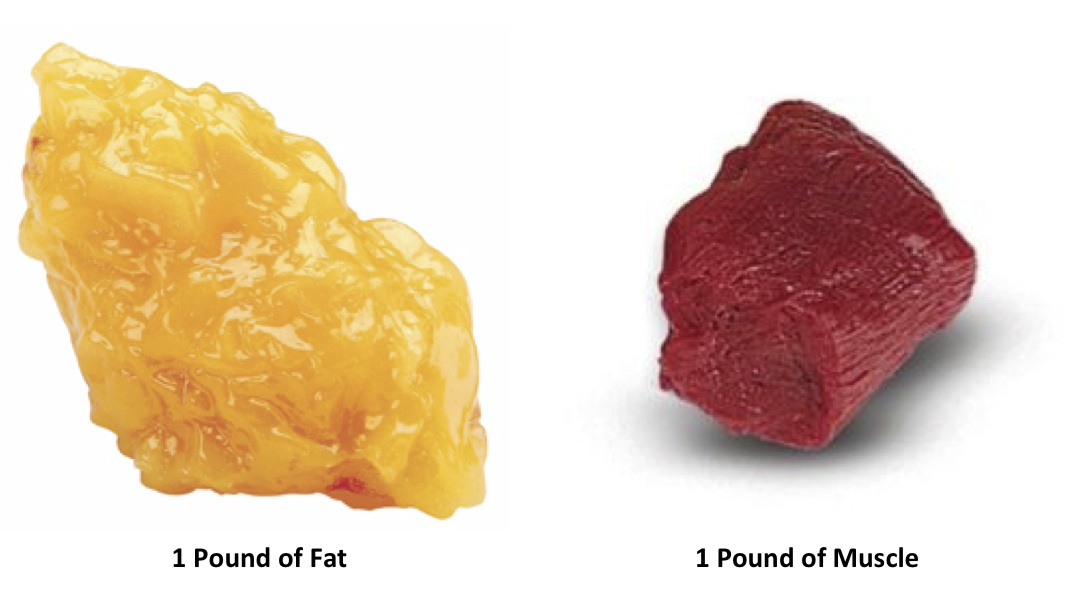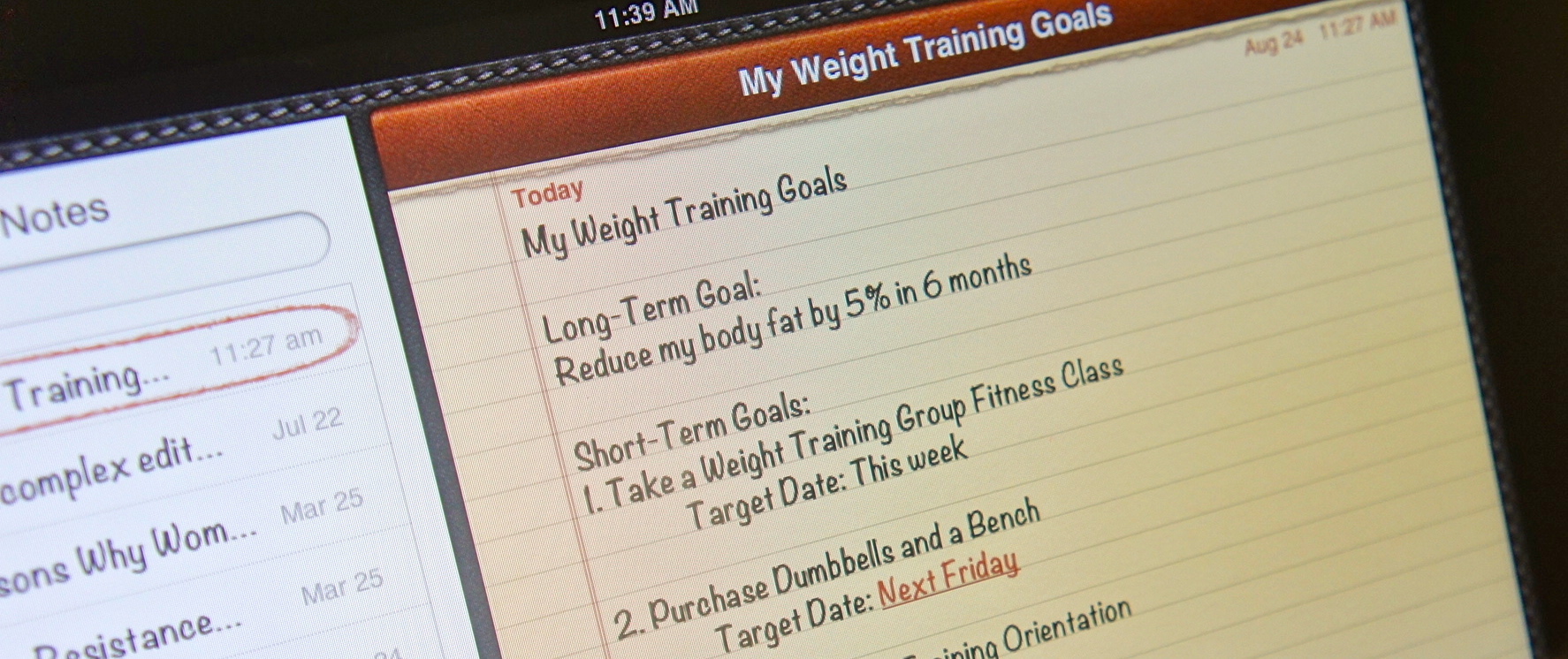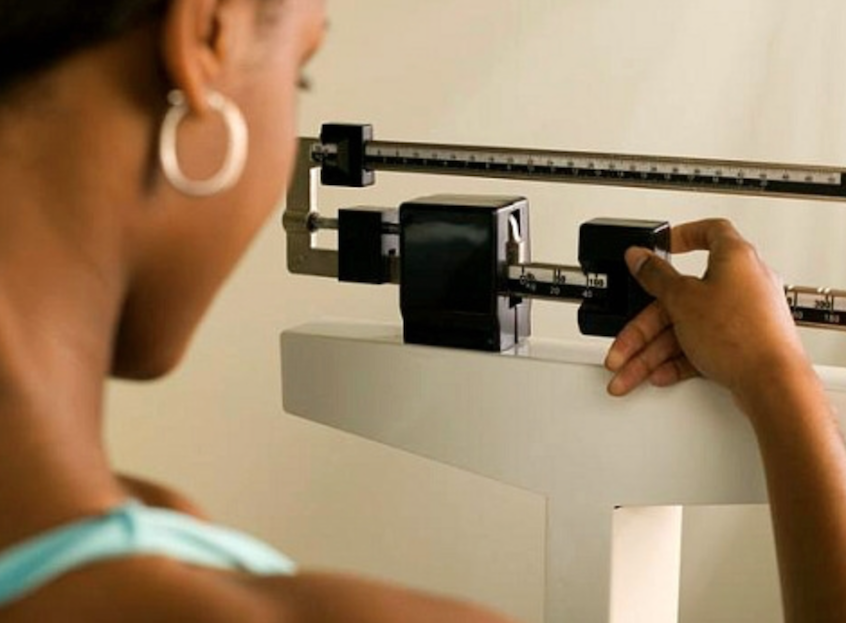Defining and setting your personal weight training goals is an essential first step in the process of establishing a solid workout routine. When establishing your initial goals, I recommend first focusing on the reason(s) you’re engaging in this activity in the first place. Identify your expected benefits and create a “big picture” for yourself. Doing this will help you stay on course throughout your journey and keep you motivated as you experience setbacks along the way, which you will.
Determining Your Weight Training Goals
When you begin the process of planning, ask yourself: “What are my short- and long-term goals?” Get a pen and pad or tablet, think carefully and write down all the things you hope to achieve.
Short-term goals (daily and weekly) will provide you with instant gratification while longer-term goals will help keep you from becoming frustrated with short-term setbacks. If you’re a newbie, in the short-term you may choose to take a weight training class or purchase a few sessions with a personal trainer in order to become familiarized with the equipment. Perhaps, you’re already training and may choose to increase the amount of weight you’re currently lifting by 10%.
Related Article: 5 Reasons Why Resistance Training Is Necessary for Weight Loss
Your long-term goals, on the other hand, may be centered on getting leaner and stronger, losing weight or managing your current body weight. As you become accustomed to weight training, you may then establish more specific ‘vanity-focused’ long-term goals like getting rid of jiggly arm fat or toning up your saggy butt.
In addition to determining your specific short- and long-term weight training goals, ensure they are both realistic and measurable.
If you’re 75 pounds overweight and have never lifted weights before, it’s not very realistic to set a goal of having arms like Michelle Obama. A more realistic goal would be to simply start training twice a week. In the short-term you may aim to lose an inch or two off your arms in a month, a goal that is both realistic and measurable.
Measuring your training progress is a great way to reinforce achievement of your goals. In the following paragraphs, I highlight some of the more common methods of doing this.
The Scale
Without a doubt, the scale is the most common method of measuring training progress. But, when it comes to weight training, it can also be the most useless. Scales only measure total body weight and don’t distinguish between fat, muscle or water weight. Depending on your size, your weight may slightly increase with weight training as it builds muscle and muscle is more dense than fat. As such, the more dense muscle will make it appear as if you’re heavier on the scale when in actuality you’re just leaner.
Related Article: The Body Mass Index Versus Body Composition: What You Need to Know

Photographs
Taking before and after photographs of yourself is an excellent and very economical way to measure your progress in real time. You can do this by simply snapping photographs of yourself while you’re standing in front of a white wall or door. It’s best to snap portrait-sized photographs at front, side, and back angles. In order to capture your body in its entirety, you should wear a bikini or a sports bra with short shorts (maybe even nothing at all to get the full effect).
Circumference Measurements
Taking circumference measurements is one of the simplest methods by which you can measure your overall progress with weight training. Doing so is actually much more useful than weighing yourself, as you’ll be able to track the amount of inches you lose, which is more indicative of changes in your body composition. Using a high-quality tape measurer, simply take measurements from key parts of your body like your shoulders, arms, forearms, chest, hips, thighs, and calves once or twice a month.
Related Article: Guidelines for Taking Circumference Measurements
Body Composition Testing
If you’re really serious about weight training, body composition testing is a great approach for measuring your progress. There are many options available to you including underwater weighing, dual-energy X-ray absorptiometry (DEXA), the Bod Pod, calipers, and bioelectrical impedance devices. Now, some of these tests can be a bit costly but the information obtained is well worth it. Most universities and colleges offer the more costlier tests at low prices or even for free if you participate in research.
While some methods are more accurate than others, so long as you always carry out the same one under the same conditions (same time of day, wearing the same clothing, and being well-hydrated) you’ll have a relative measurement that tells you whether or not you’ve gained muscle.
Training Log
When it comes to measuring your weight training progress, keeping a training log is an absolute must! This is by far one of the most useful methods as you can consistently compare where you started to how far along you’ve come. This is an especially beneficial tool for measuring your short-term strength gains.
Now, once you’ve established specific, realistic, and measurable short- and long-term goals for weight training, you’re ready to put together your weight training schedule.
Establishing Your Weight Training Schedule
When it comes to developing your weight training plan you should first decide how many days a week you’re able to commit. Weight training should generally be performed at least 2-3 days per week and can be done along with cardiovascular exercise(s) or separately. A typical weight training session can last anywhere between 20 minutes and 1 hour.
There’s a laundry list of weight lifting exercises you can perform. Bodybuilding.com is a valuable online resource that offers free demos for over 300 exercises and I highly recommend using it. If you prefer a book instead, Strength Training Anatomy is another good resource with over 600 full-color illustrations.
If you’re a beginner, opt for at least 1-2 exercises for each of your body’s major muscle groups and perform them on alternating days of the week. If you don’t have much time to lift weights, you could easily dedicate just 10 minutes every day to performing three exercises that work just one major muscle group. Another option is to participate in a weight lifting-based group fitness class at your local gym. It’s all about establishing a routine that fits into your lifestyle.
VIDEO: A 3-Day Weight Training Workout for Women
Once you have a set schedule, you’re now ready to put together a weight training plan that works with this schedule. And you can start by choosing your weight training exercises and equipment.







